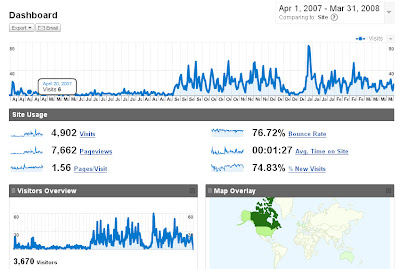South March Highlands Management Plan Open House April 30
In November 2007 the Fifth Column discussed the South March Highlands Management Plan and the suggestion by the Kanata Environmental Network (KEN) that public use of the lands be kept to the periphery. Fortunately that view is not shared by any other environmental or user group, nor is it shared by the City of Ottawa.
If you want to know what is going on with the plans for the South March Highlands and want to have your say the public consultation process is about to begin. The first public meeting will be an open house from 7:00 to 9:00 PM at the Kanata Old Town Hall on March Road, near Klondike Road, on Wednesday April 30, 2008. This will be a relatively informal drop-in format as the consultants (Douglas and Ruhland Associates, landscape architects) “would rather engage and talk directly to those interested than have a formal presentation at this point in the process”.
Click here for a link to the Terms of Reference for the South March Highlands Management Plan, which includes the following information (extracts):
These forest lands include some of the most significant ecological features and functions within the City of Ottawa. It is the most ecologically diverse landscape in the City, overlies a section of the Canadian Shield and provides an exceptional natural environment experience. It also provides significant cultural and recreational resources with extensive use (hiking/walking and mountain biking being the two most prominent) by the immediate community, the larger City population, and in the case of some activities such as Mountain Biking, people living outside of the City.
Several issues have emerged in the area:
· The area is well known as a mountain biking and hiking/walking destination and at present, an extensive informal trail network has developed. There is the possibility that the location of certain sections of trail and/or the construction techniques that were used to build the trails are not necessarily consistent with the protection of natural values in the area. At the same time significant volunteer efforts have been made in recent years to implement lower impact trail construction techniques within the City owned conservation forest.
· Potential conflicts between users (nature appreciation, casual walkers, mountain bikers, hikers).
· Increased indirect impacts (edge effects, loss of interior habitat and connectivity ecological support systems) and use impacts as designated development areas build-out.
· There is no interpretative plan or efforts to direct the current range of users to protect or take advantage of features in the highlands.
· There is a lack of formal access or trail-head provisions.
· The need for a trail section or access for physically challenged residents has been raised.
· Limited existing tools to manage the form and intensity of recreational or other use in the area.
Objectives:
The overall objective is to design a management strategy that will provide long-term management direction for a 20 year period which provides for protection of the significant ecological features and functions of the South March Highlands while allowing users to experience the area through appropriate recreational activities in a way which is both manageable and sustainable in terms of the City’s, and stakeholder and user group resources.
The planning process will include:
· Participation in a project initiation open house to introduce the project to the community.
· Identification of use and management objectives through a stakeholder workshop and/or other consultation approaches to gain stakeholder input.
· Identification of opportunities for appropriate recreational use (open air recreation including hiking and biking, education, nature appreciation) and concerns related to inappropriate use and strategies to mitigate the effects of recreational use…
· Review and incorporation of best practices for low impact recreational use/trail development and management of near urban/urban natural features
· Develop detailed management recommendations
o Management of uses – where different uses should occur, how to control impacts.
o Management of future stressors (adjacent development, climate trends, invasive species)
o Recommendations related to connectivity to other landscape features within and outside the forest; and longer term strategic objectives for preservation of ecological integrity such as additions to the forest.
· Conceptual plan for infrastructure (recommendations for trail location, trail treatment, access).
o Trail location options (including an accessible trail)
o Trail treatment and design options
o Use management (signage, etc.)
o Access and potential trail head/ parking locations
o Interpretive resources (e.g. kiosk).
 The Fifth Column hopes to see you all at the open house on April 30.
The Fifth Column hopes to see you all at the open house on April 30.










